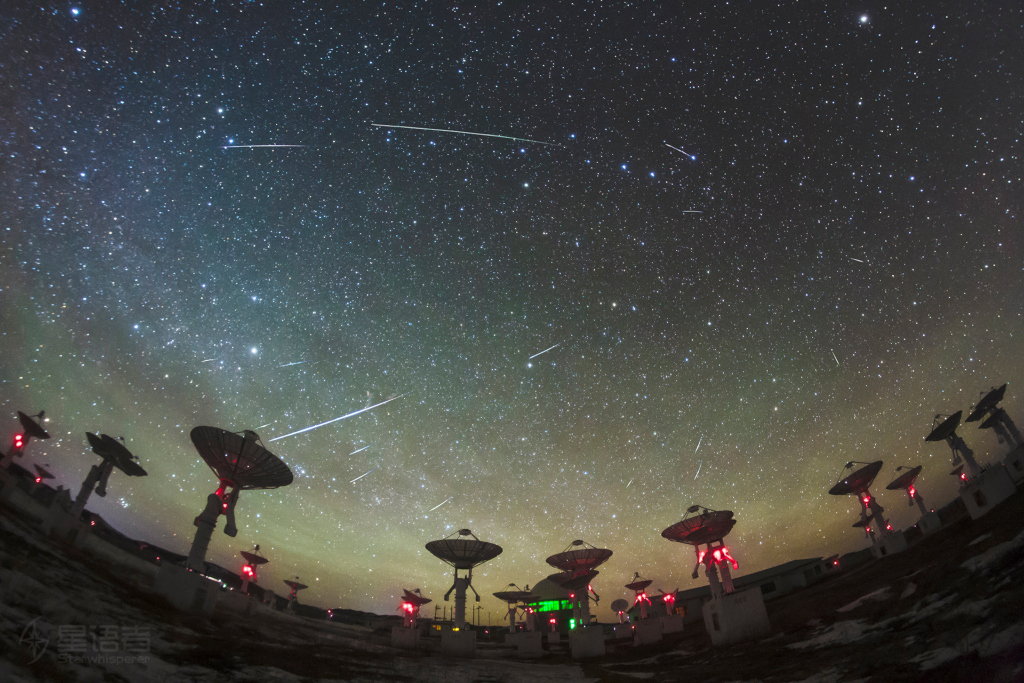2022年1月8日
Quadrantids of the North
Image Credit & Copyright: Cheng Luo
Explanation: Named for a forgotten constellation, the Quadrantid Meteor Shower puts on an annual show for planet Earth’s northern hemisphere skygazers. The shower’s radiant on the sky lies within the old, astronomically obsolete constellation Quadrans Muralis. That location is not far from the Big Dipper, at the boundaries of the modern constellations Bootes and Draco. In fact north star Polaris is just below center in this frame and the Big Dipper asterism (known to some as the Plough) is above it, with the meteor shower radiant to the right. Pointing back toward the radiant, Quadrantid meteors streak through the night in the panoramic skyscape, a composite of images taken in the hours around the shower’s peak on January 4, 2022. Arrayed in the foreground are radio telescopes of the Chinese Spectral Radioheliograph, Mingantu Observing Station, Inner Mongolia, China. A likely source of the dust stream that produces Quadrantid meteors was identified in 2003 as an asteroid.
Status Updates: Deploying the James Webb Space Telescope
Tomorrow’s picture: shrinking red spot
北半球的四分仪座流星雨
影像提供与版权: Cheng Luo
说明: 以早已遗忘的星座为名的四分仪(座)流星雨,是地球北半球观星人会追随的年度天文盛事之一。其辐射点在已弃用的古老四分仪座之内,位于现代的牧夫座和天龙座之交界处,离北斗七星不远。在这幅主题影像里,指北的北极星位在中下方,北斗七星(或称牛犁)在它的上方,而这群流星雨的辐射点在右侧。在这幅摄于2022年1月4日极大期前后的组合影像里,掠过长空的四分仪流星之流星痕,皆可回溯到这个辐射点。影像前景的阵列,是中国.内蒙古.明安图观测站的中国射电日像仪的天线碟。造成四分仪流星雨的尘埃碎片流,在2003年判断可能是源自一颗小行星。
现况更新: 韦伯太空望远镜
明日的图片: shrinking red spot







